History
- Introduction
- The beginnings - Art Nouveau & Red Propaganda (1895 - 1919)
- Art Deco & Modernism (1920 - 1944)
- The distinctive poster art of a short-lived democracy (1945 - 1949)
- Socialist Realism and the continuity of the modern poster (1950 - 1955)
- A cavalcade of styles & techniques (1956 - 1970)
- The low-culture and the neo avantgarde (1971 - 1990)
Introduction
In this section the history of Hungarian poster art is introduced. There are six chapters, each about an important period of Hungarian poster history. These texts just give a little insight into the history since going into details could easily fill a heavy book. You can use the links above to choose the preferred period.
1. The beginnings - Art Nouveau & Red Propaganda (1885 - 1919)
The first chapter introduces the early days of Hungarian poster art. It all began in the 1880s, and soon, the streets were covered with posters. This chapter presents the Hungarian poster design pioneers, and the many important Hungarian painters, who designed only a few posters, but were very important in showing how a poster can truly be a poster, instead of a field crowded with letters and ornaments, or an image depicting realist scenes. It also tells about the first two decades of the 20th century, which was dominated by the Art Nouveau movement in poster design, and the birth of commercial and (mainly war) propaganda posters. This chapter ends with a very important and very short period of Hungarian poster art, the few months of the Hungarian Soviet Republic in 1919, during which many of the best Hungarian artists designed fantastic modern propaganda posters.
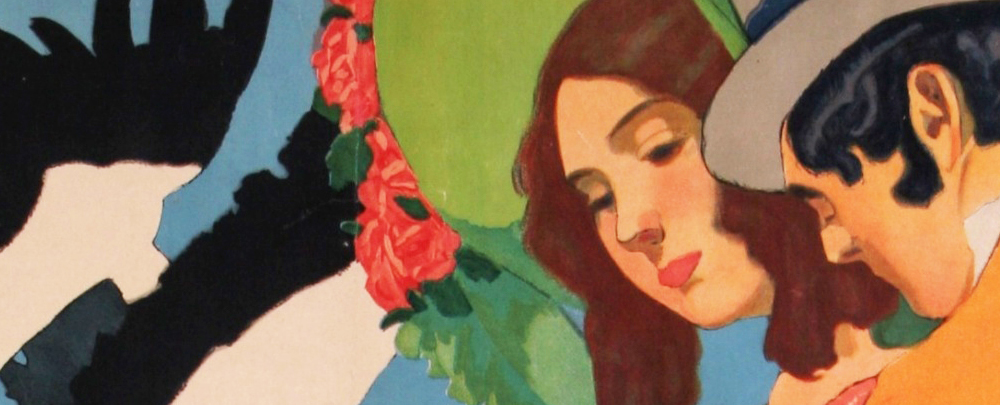
Faragó: Gólya (Stork) department store (detail)
Outstanding artists:
- Géza Faragó
- Mihály Bíró
- Márton Tuszkay
- Lipót Sátori
- Imre Földes
- Árpád Bardócz
- Marcell Vértes
- János Vaszary
- József Rippl-Rónai
- Hellmann Mosonyi-Pfeiffer
- Róbert Berény
- Béla Uitz
- Ödön Dankó
- János Tábor
2. Art Deco & Modernism (1920 - 1944)
The second chapter is about the two and a half decades between the two world wars. It was a true golden age of poster design, both in Hungary and worldwide. It was a very important age for the development of commercial design. Although there were many different artistic trends existing simultaniously, these years were dominated by two important trends: modernism and Art Deco. The modernist revolution started in 1926, when the former emigrant, Bortnyik, Kassák and Berény returned to Budapest. István Irsai joined in 1929, and these four artists were the most important members of the first generation of modernist-constructivist commercial design. The other important trend was Art Deco, and there were many artists who designed countless amazing posters, but the most important ones were: Tibor Réz-Diamant, József Bottlik and Aladár Richter, jr.
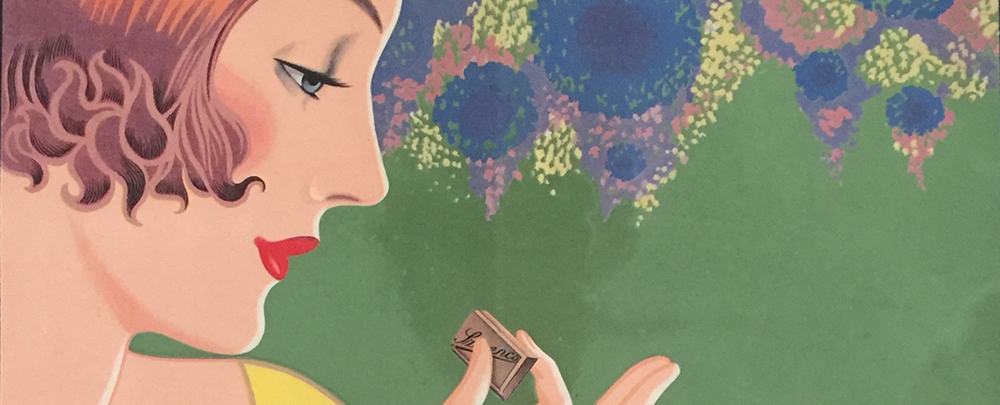
Szerencsi chocolate bonbons cocoa Art Deco poster (detail)
Outstanding artists:
- Sándor Bortnyik
- Róbert Berény
- Lajos Kassák
- István Irsai
- Tibor Réz-Diamant
- József Bottlik
- Aladár Richter
- Tihamér Csemiczky
- György Konecsni
- Tibor Gönczi Gebhardt
3. The distinctive poster art of a short-lived democracy (1945 - 1949)
This very short period lasted only for five years, and yet it would be impossible not to think about it as an individual unit. The leading figure of these years was György Konecsni, and the most important posters were propaganda posters, mostly commissioned by the leftist parties. There are many great posters with messages dealing with the war, rebuilding, the fate of the country, new and remaining enemies. The most concentrated group of pre-eminent posters are the ones that were designed for the Social Democratic Party during the 1947 elections.
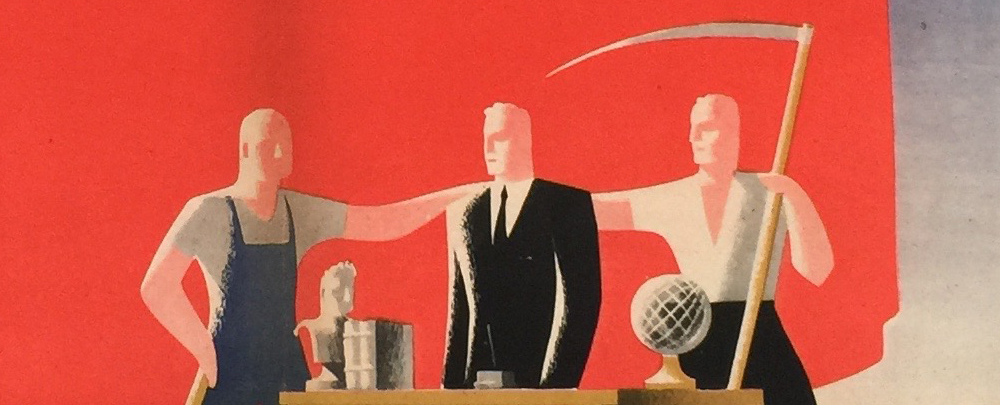
Tamássi: Intellectual, your place is among us! 1945 (detail)
Outstanding artists:
- György Konecsni
- Zoltán Tamássi
- Győző Szilas
- László Káldor
- László Horváth
- Pál Gábor
- Tibor Gönczi Gebhardt
- Chy-DÉR
- Imre Somorjai
4. Social realist period (1950 - 1955)
This chapter is about the lowpoint of Hungarian poster art, or at least a person would most probably think that. The regime set the standards of how a poster should look, and the result was a very typical, instantly recongizable painting-like style, with communist leaders and figures that embodied specific social groups. This style utilized a symbol system of recurring motifs, like wheat fields, optimistic miners, proud workers, and factories and industrial sites being built. It was uninteresting, repetitive and dull, and yet, today, it is very exciting as a form of objectified mechanical propaganda. There is another side of these years. While the social realist posters, printed on low quality paper, were used in Hungary, fantastic, modern contemporary commercial posters were designed by some of the best artists of the era, printed on the best available paper, for national exporting companies.
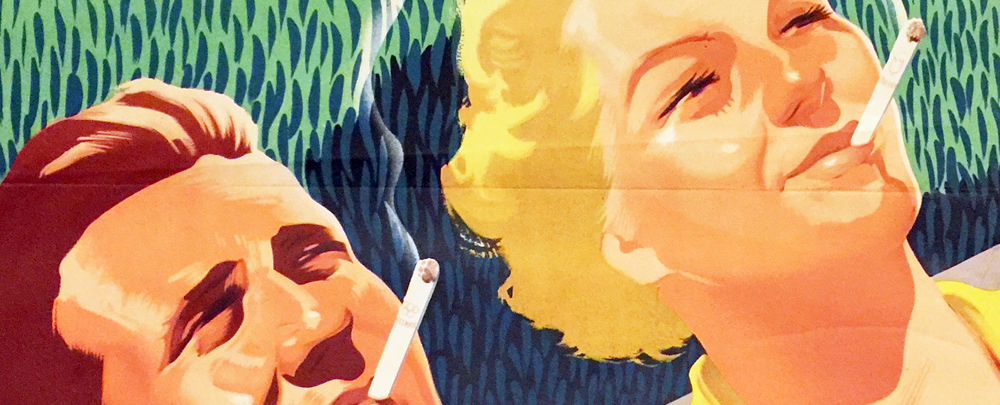
Macskássy - Fejes: More tasteful cigarette: more pleasant relaxation (detail)
Outstanding artists:
- György Konecsni
- László Káldor
- Győző Szilas
- Pál Gábor
- Gyula Fejes
- Gyula Macskássy
- János Macskássy
- Tibor Gönczi Gebhardt
- György Pál
- László Bánki
- Tibor Bánhegyi
- István Czeglédi
- István Köpeczi Bócz
5. A cavalcade of styles & techniques (1956 - 1970)
The fifth and the sixth chapter are about the second golden age of Hungarian poster art after the modernist period, which lasted three decades during the socialist years. This was the golden age for Hungarian posters in general, and especially for cultural posters, most importantly movie posters. This era was dominated by the Papp-group but there were many other great artists, who were not members of the group. This was a time when the artists had surprisingly extensive freedom, and they followed and inspired the artistic trends of the time. Western influences were important, and a mix of a great number of different styles and techniques were used, including expressive painting, line drawing, collage and cutouts, typographical posters and photomontage, just to mention a few. The artistic trends which can be easily identified, include Pop Art, Op Art, Neo Art Nouveau, Swiss Style, Psychedelic Art, New realism and Minimalism.
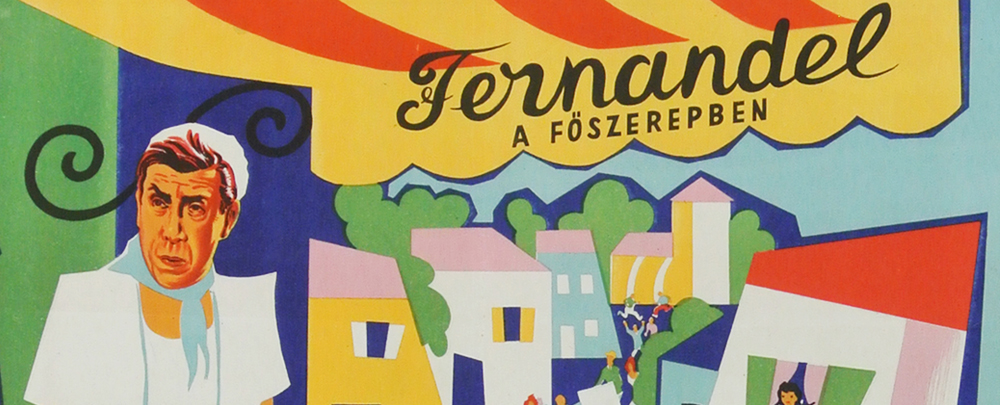
Le boulanger de Valorgue movie poster (detail)
Outstanding artists:
- András Máté
- Árpád Darvas
- Gábor Papp
- Lajos Görög
- Sándor Ernyei
- József Finta
- István Balogh
- Nándor Szilvásy
- György Kemény
- Árpád Bognár
- Vilmos Kovács
- Magda Vörösmarty
- Margit Sándor
- Ilona Müller
- Irén Tomaska
- Sándor Benkő
- Sándor Lengyel
- So-Ky
- Révész - Wigner
- Győző Szilas
- Tibor Zala
- László Lakner
- Endre Bálint
- Győző Varga
- Antal Gunda
- Crescencia Zelenák
- Tibor Gönczi Gebhardt
- György Kemény
- Lajos Vajda
- Filo
6. The low-culture and the neo avantgarde (1971 - 1990)
The last chapter forms a unit with the previous chapter, the two are uninterrupted, but it is still a distinct period. The influence of current artistic trends continued, but a new generation of artists started to work, new groups were formed, and the country slowly opened up, the socialist system was coming to an end. The Hungarian poster was a hundred years old in 1985, and there was a large poster exhibition in 1986, in Műcsarnok (Kunsthalle). By 1990, the last golden age of Hungarian poster art ended.
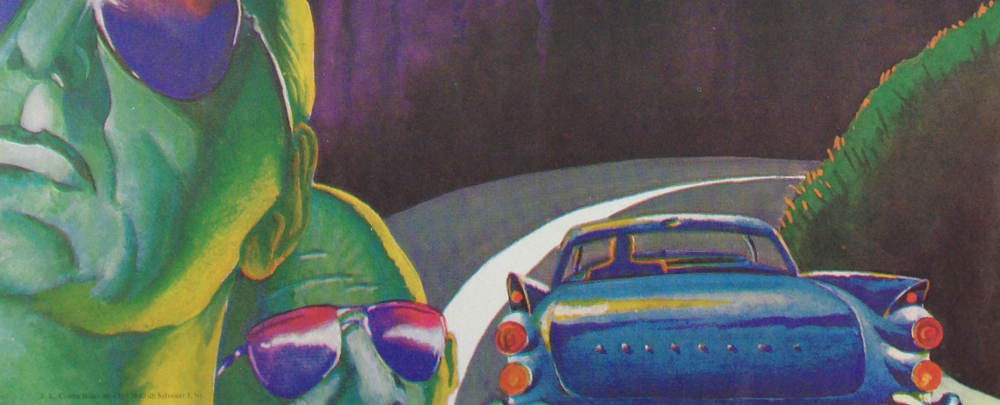
Helényi: Close Encounters of the Third Kind 1981 (detail)
Outstanding artists:
- György Kemény
- Kálmán Molnár
- Károly Schmal
- István Bányai
- Sándor Pinczehelyi
- István Bakos
- András Felvidéki
- Tibor Helényi
- József Árendás
- István Orosz
- József Tóth
- György Oláh
- Gyula Molnár
- Gábor Gyárfás
- Péter Pócs
- Krzysztof Ducki